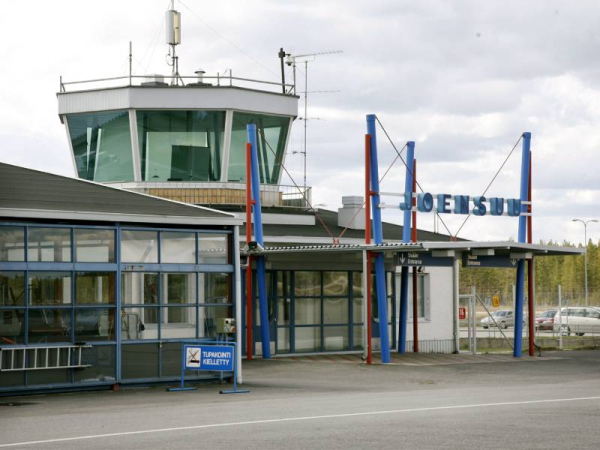Ministry: Non-subsidised flights might be viable to three regional airports in Finland

The traffic control tower at Joensuu Airport. The airport is one of three regional airports with the potential for market-based flights to and from Helsinki, according to an analysis carried out by the Ministry of Transport and Communications. (Timo Jaakonaho – Lehtikuva)
- Next Article Helsinki’s new landmark rises above sea level today
AN ANALYSIS by the Ministry of Transport and Communications has found that non-subsidised flights might be viable from Joensuu, Kajaani and Kemi.
Flights from Kajaani to Helsinki are presently the closest to having the passenger volumes required for market-based operations, with a passenger load factor of 31–65 per cent between January 2021 and June 2023.
The Helsinki—Savonlinna route had the lowest passenger load factor in the two-and-a-half year period, 7–19 per cent.
The Finnish government has outlined that the development of domestic flight connections should be founded on the goal of ensuring the capital is accessible from all parts of the country within three hours. Its action plan outlines that the development should be primarily market-based although subsidies may be dished out if necessitated by exports, tourism or security of supply.
Domestic flights will be on the agenda as the government holds its budget session in the autumn.
The government spent a total of 42 million euros supporting flights from Helsinki to Joensuu, Jyväskylä, Kajaani, Kemi and Kokkola in 2021–2023 – significantly more per passenger than rail connections, according to an earlier report by Helsingin Sanomat. Flights between Helsinki and Savonlinna have been covered in half by the state up to 500,000 euros a year, whereas those between Helsinki and Pori have been subsidised by Pori.
Flights between Mariehamn and Stockholm have been subsidised by the regional government of Åland. Those between Mariehamn and Helsinki have been market-based.
The Ministry of Transport and Communications underscored in its report that cities should be treated equally if the government decides to continue subsidising flight connections to regional airports.
One possible solution, it forwarded, is to support work-related air travel by covering 50 per cent of the costs of up to 10 return connections a week, with the cost of any additional capacity falling on the shoulders of the region. The solution would cost the central government a total of 33 million euros between April 2024 and October 2027.
The report also pointed out that no airline is likely to start providing market-based services on a domestic route as long as it is possible that the government subsidises services on another route.
“Flying a subsidised route is a profitable and low-risk operation for companies. It would be best to be clear and consistent in communication in regards to the approach to purchased flights in the future,” the ministry advised.
Domestic flights, it viewed, are important for regional economies. The Finland Chamber of Commerce has carried out a study showing that business executives believe good transport connections to be the second most significant factor for regional competitiveness after labour supply.
The ministry also pointed to international surveys indicating that air travel is key for promoting innovation and production efficiency. On the other hand, it acknowledged, the proliferation of teleconferencing has probably already reduced and will continue to reduce the need to travel physically. From an industry viewpoint, the amount of domestic air cargo has been on the decline for a long time.
Aleksi Teivainen – HT
- Next Article Helsinki’s new landmark rises above sea level today
Source: www.helsinkitimes.fi
